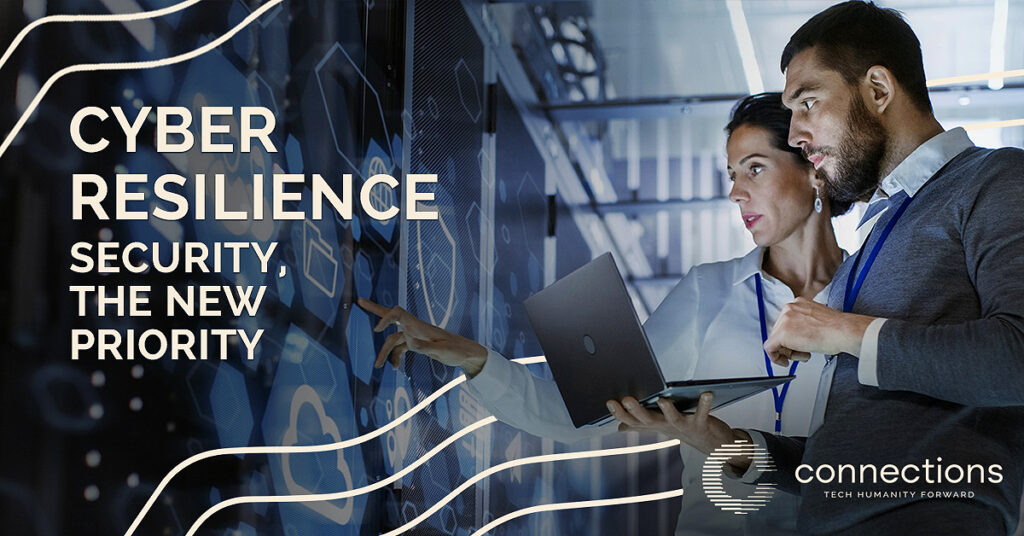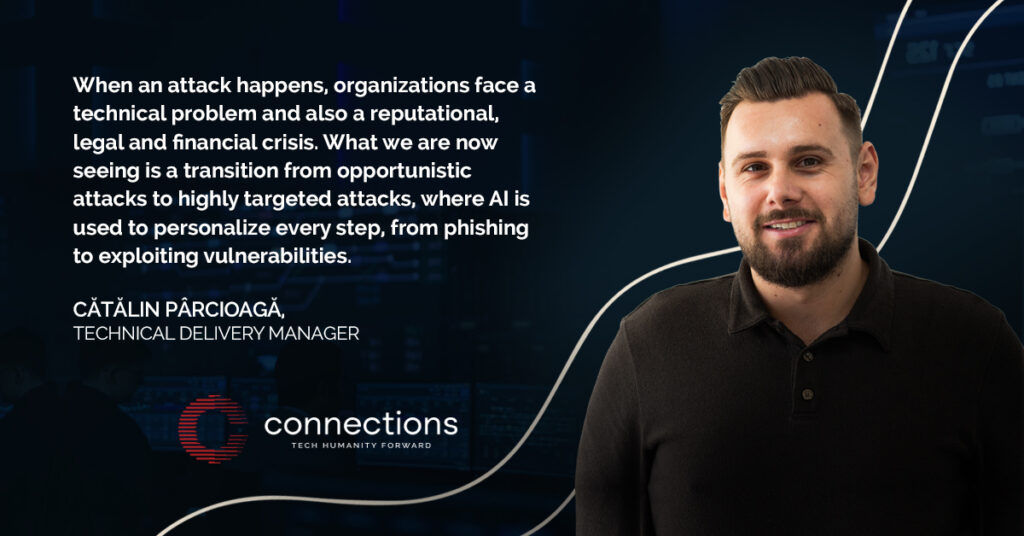
On a typical morning, a CFO opens his laptop and begins his workday. He receives an urgent email, apparently from the company’s CEO, requesting an immediate transfer for a strategic acquisition. The signature, tone, and details are perfectly believable. Within minutes, millions of euros disappear without a trace. Hours later, IT confirms: it was an AI-generated deepfake.
This is no longer a hypothetical story. It is the reality in which we operate. We live in an era where cybersecurity is no longer just a technological issue, but a strategic one, defining the survival of companies and the stability of economies.
Ransomware on an unprecedented scale. AI attacks that are indistinguishable from reality. The cloud, the new battlefield of digital security. Tougher regulations than ever. Cyberwarfare is redefining geopolitical strategies.
In 2025, cybersecurity is no longer just a concern of IT teams. It is a critical element in the strategy of any company, whether we are talking about a bank, a retailer, or a government institution.
From ransomware attacks that paralyze businesses overnight, to deepfakes used for fraud at the highest level, today we are facing unprecedented challenges. AI plays on both sides of the barricade; European regulations NIS2 and DORA have changed the rules of the game, and cloud security remains a major vulnerability if not handled correctly. In parallel, global tensions are transforming cyberwarfare into a strategic weapon with huge economic and social implications.
Are we ready for this reality?
Ransomware – the currency of digital crime
If a few years ago ransomware was a tactic used by hackers to block access to files, today, the methods are much more sophisticated. Attackers are no longer satisfied with encrypting data – they steal it, analyze it and threaten to make it public, exerting immense pressure on victims.
“The moment an attack happens, organizations face not only a technical problem, but also a reputational, legal and financial crisis,” explains Cătălin Pârcioagă, Technical Delivery Manager. “What we are seeing now is a transition from opportunistic attacks to extremely well-targeted attacks, in which AI is used to personalize every step, from phishing to exploiting vulnerabilities.”

The solution? Automating threat detection with artificial intelligence, strict backup policies, and, above all, educating employees. 91% of ransomware attacks start with a simple phishing email. This means that good training can prevent disasters.
The new rules of the game: NIS2 and DORA
Today, cybersecurity is no longer an option, but an obligation. The European Union imposes strict standards through NIS2 (Network and Information Security Directive) and DORA (Digital Operational Resilience Act), changing the rules for companies in critical sectors, especially those in the financial sector.
“If until now many organizations saw cybersecurity as an additional cost, these regulations turn it into a strategic requirement,” explains Cătălin Pârcioagă. “NIS2 expands the scope, and DORA brings a unique framework for managing IT risks in the financial sector. There is no longer room for improvisation – every company must rethink its security strategy.“
What does this mean in practice?
• Organizations report cyber incidents in a very short time.
• Financial institutions test their operational resilience regularly.
• Penalties for non-compliance are severe – a bank can be fined up to 2% of annual turnover.
This context raises a crucial question: Are we prepared?
Security in the cloud era – benefit or risk?
In a world where 85% of companies adopt a “cloud first” strategy, infrastructure protection is becoming a hot spot. Until now, the discussion was about the advantages of the cloud, in 2025 the focus has shifted to securing it.
“We have seen companies migrating to the cloud without a clear security strategy, and this exposes them to major risks,” says Cătălin Pârcioagă “A misconfiguration can mean the loss of essential data or unauthorized access to critical infrastructure. The solution? Zero Trust architecture and continuous monitoring through Cloud Security Posture Management.”
In other words, companies can no longer treat security as a secondary aspect of digital transformation. It must be integrated from the beginning.
AI: Savior or Threat?
Artificial intelligence is cybersecurity’s strongest ally – and, paradoxically, its biggest threat.
“In 2023, we saw the first major attack using a deepfake voice, in which a CFO was tricked into transferring millions of euros. Such attacks force us to rethink digital identity security – multi-factor authentication is no longer an option, but a necessity.”
AI is a game-changer in security, but success depends on how quickly companies can integrate it into their defense strategies.
Are we ready for the future?
Digital security is undergoing a major test. On the one hand, attackers are becoming more sophisticated, on the other hand, defensive technologies are evolving rapidly.
“Cybersecurity is no longer just about protecting data. It’s about protecting businesses, economies and, ultimately, society as a whole,” he concludes. “There is no magic solution, but the key is a mix of technology, strategy and education. In a world where data is the new gold, protecting it is no longer an option – it is an absolute necessity.“